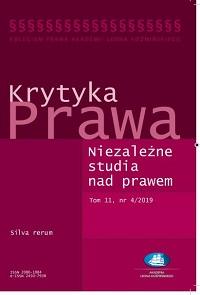Od harmonizacji do fragmentaryzacji międzynarodowego prawa patentowego. Włączenie problematyki standardu ochrony patentowej w zakres regulacji umów o wolnym handlu
Wojciech Maciejewski
Uniwersytet Warszawski
2017 9 (2) Krytyka Prawa. Niezależne studia nad prawem
DOI 10.7206/kp.2080-1084.152








